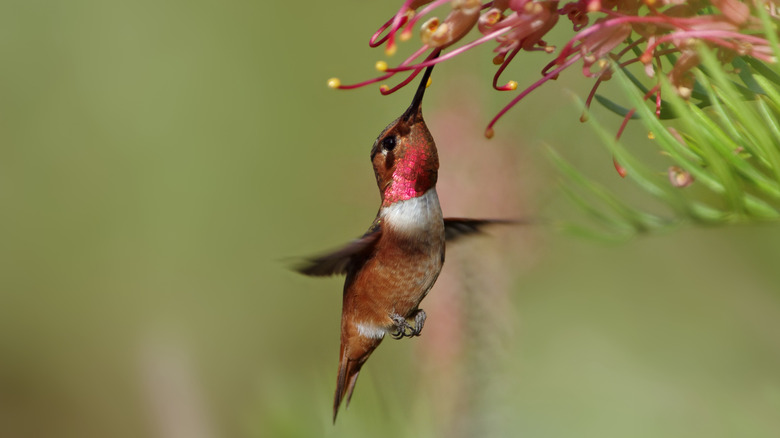Attract Hummingbirds The Budget-Friendly Way With A Flower You Can Grow From Seed
There's something fascinating about hummingbirds. Their speed, color, and tiny size make them stand out from every other bird that visits a backyard. If you're hoping to bring more of these tiny visitors to your yard, zinnias (Zinnia elegans) are one of the easiest ways to do it. Their bright blooms deliver plenty of nectar, and pollinators like butterflies, bees, and hummingbirds flock to them throughout the season.
Zinnias are native to Mexico and parts of the southwestern United States, but today, gardeners grow them across the country with ease. Their long blooming season, often stretching from early summer right up until frost, gives pollinators a dependable food source during the warm months. Even beginner gardeners grow zinnias successfully, thanks to their ability to handle heat, sun, and a wide range of growing conditions without much trouble.
The flowers themselves come in a huge variety of shapes and sizes. Some varieties grow short and compact, staying around a foot tall, while others reach up to 3 or 4 feet, standing tall on upright stems. The blooms can appear as simple, open faces or layered, full blossoms that resemble small dahlias. Zinnias bloom in just about every color you can think of, from soft pastels to bold, vivid shades, with the exception of true blue.
How to grow zinnias from seed indoors and outdoors
Starting zinnias from seed is one of the easiest and most affordable ways to fill your garden with bright blooms that hummingbirds can't resist. The seeds are inexpensive and germinate quickly without requiring much effort, making them a great choice for gardeners of any experience level. You'll want to wait until the danger of frost has passed before planting zinnias directly outdoors. They need warm soil to sprout, so aim for the soil to be about 60 degrees when planting.
For an earlier blooms, you can start seeds indoors about four to six weeks before the last expected frost. Use biodegradable pots or seed trays filled with free-draining soil to avoid soggy conditions. Once seedlings sprout, transplant them into individual pots so they have room to grow until it's safe to move them outside. Whether starting zinnia seeds indoors or outdoors, plant them about ¼ inch deep in well-draining garden soil and keep the area evenly moist until the seedlings emerge, usually within a week.
Zinnias thrive in full sun and aren't too picky about soil as long as it drains well. Space seedlings 8 to 24 inches apart, depending on the variety, to keep plenty of air flowing and reduce the chance of mildew. Once established, zinnias only need moderate watering and prefer to stay on the drier side rather than soggy. Always water at the base to avoid getting the leaves wet, which helps prevent fungal issues. Hummingbirds will thank you for the colorful source of nectar, and you'll get to enjoy the display.

